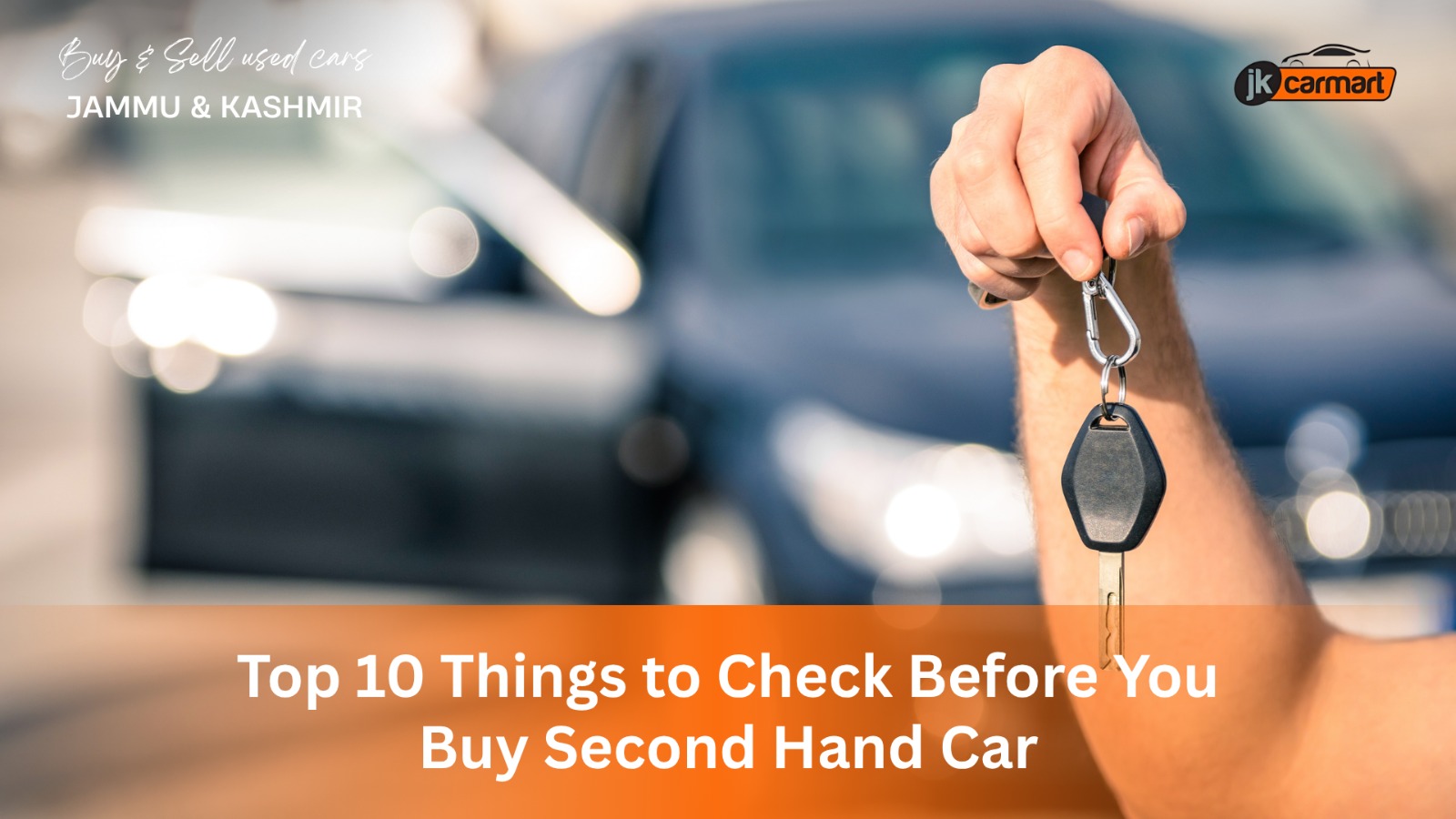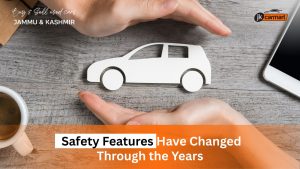Introduction
The used car market is massive and growing faster than ever, but it’s also full of cars with hidden histories: flood damage, clocked odometers, unpaid loans, shady repaint jobs; you name it.
And let’s be honest, most second-hand cars look way better in the photos than they do in person. But the truth is that a lot hides beneath the surface. And if you’re not careful, that sweet deal can turn into a bottomless money pit. Missing even one detail can cost you a lot.
So before you sign any papers, slow down and check this guide, where I have broken down the 10 things you absolutely need to check before you buy a second-hand car.
1. All Compulsory Documents (RC, Insurance, PUC, etc.)
First things first: check all essential documentation. You need to request the original Registration Certificate (RC), not a copy, as this is the lawful evidence of ownership.
Ensure the chassis number, engine number and registration numbers align with what’s on the automobile.
Next, verify the insurance policy is active and free from heavy claim history. Also, request a PUC certificate (Pollution Under Control), and an expired PUC implies no clean legal transfer.
If the car previously had a loan, ask the financier for the No Objection Certificate (NOC). And if the car is out-of-state, obtain the RTO Form‑29/Form‑30 NOC for transfer.
Also Read: Car Ownership Without Headache: Tips to Save Money and Time
2. Owner History & Service Records
Ask how many owners it has had previously—ideally one or two. Check the service book, receipts, and invoices to see that there has been proper maintenance and mileage noted.
Irregular mileage gaps or missing service may indicate odometer fraud. A well-maintained vehicle should have servicing every 10–15 thousand km.
3. Vehicle History Check (Parivahan / VAHAN Data)
Use the Parivahan VAHAN portal to check the car’s transaction history: you’ll be able to see past ownership transfers, RTO facts, and possible discrepancies.
This process can reveal concealed accidents, title issues, suspicious transfers and enable you to make an informed decision.
4. Exterior Inspection of Rust, Panel Gaps & Paint
During the day, inspect the exterior of the car to look for:
Look for obvious rust. Inspect the wheel arches, door hinges, underneath the car, and around the windshield. These are usually the first places you will see rust and corrosion.
Check the alignment of the body panels. If the body panels do not line up evenly, the gaps between front and rear doors are uneven, the paint and sheen of the surface are off, or there are wavy reflections on the surface, it has likely been in an accident, has been repaired, or has had some painting done to cover up a problematic area.
5. Engine Bay & Fluid Checks
You can check the engine and the fluids with this simple test:
Start with a cold engine so everything’s settled. Open the hood and pull out the dipstick. Now, wipe it clean with a rag and check the oil. If it looks milky, thick, or like weird, greasy mayonnaise, that could mean coolant is mixing with the oil, which is not a good sign. It might be a head gasket problem.
Take a moment to check every fluid: the engine oil, coolant, brake fluid, and even the windshield washer. If anything’s unusually low or looks grimy, especially the coolant or brake fluid, it might be a sign of poor maintenance or a leak that’s been ignored for too long.
Inspect belts and battery age as well. A dry, cracked belt or an old battery is also not a good sign.
6. For Signs of Flood Damage
India’s monsoons have wrecked more cars than you’d think, and a lot of them end up in the second-hand market looking all cleaned up. So be careful.
Take a good sniff inside the car. If it smells damp or mouldy, then that’s not a good sign. Check under the carpets and around the seat belts for any signs of rust or mildew.
One trick is to pull the seat belt all the way out and see if there’s any mould or discolouration on the fabric.
If you’re checking the engine, ask the seller to remove a spark plug. If the plug is rusty, has an unusual white substance on it, or (worst of all) water sprays out when the engine turns over, then that’s a clear sign that the car has been through a flood.
7. Check these things during the Test Drive
Never buy a second-hand car without a test drive.
When you turn the key and start the engine, it should start the first time without any delay or grinding sound. If it delays or makes strange sounds before starting, there may be a problem with the car’s engine.
As you drive, also check the steering; it should feel steady and not loose or shaky. Brakes should respond quickly with a firm pedal. If they feel mushy or make squeaking sounds, that could indicate problems.
Drive over a few bumps or rough roads. Listen for rattles, and if you hear clunks or knocking sounds, those generally indicate worn suspension. Occasional clicking sounds from the front wheels when turning can indicate bad CV joints.
Also, watch the temperature gauge; it should rise gradually and stay near the middle. If it starts heating up quickly, it could be a cooling system problem.
8. Condition of Interior and Odour
While in the vehicle, take a look at the seats, upholstery, dashboard and roof lining. Any heavy staining or strange wear patterns usually mean that the vehicle has not been well looked after.
If the vehicle also has an overwhelming perfumed smell, like someone overdid it with air freshener, the smell might just be covering something up, like the smell of stale cigarette smoke or even mould.
Pay special attention to any musty or pet odours as well. Those types of odour can penetrate the seats and carpets, and at times, no cleaning will remove the odours entirely.
9. Electrical Systems and Safety Features
In the interior of the car, don’t skip the basics and flip every switch. Headlights, indicators, brake lights, wipers, horn, power windows, central locking, the AC and heater, you should try them all. If something doesn’t respond, you’re looking at a future repair.
Now check the dashboard when you turn the key. All the warning lights (ABS, airbag, engine) should flick on for a moment and then go off once the engine’s running. If any of them stay lit, that usually means trouble hiding under the hood.
10. Get a Mechanic to Take a Look
No matter how great the car appears to be, it doesn’t hurt to take someone with expertise along with you, too. A trusted mechanic or third-party inspection service will identify what’s not so perfect that you might not recognise it.
They typically perform an OBD scan for error codes, check for underbody rust, check suspension wear, brake health, or anything wrong with the steering or engine, to give you a comprehensive understanding of what you’re about to buy.
It’s a small price for peace of mind, and it can save you from buying a damaged car.
Also Read: How To Navigate the Transfer Process Smoothly
Conclusion
A car is a big investment. And if it’s hiding problems, you don’t just lose money, you also waste time, deal with constant repairs, and end up with a car you can’t even rely on. And none of that’s really worth it. That’s why checking all these little things like smells, seat belts, warning lights, and strange engine sounds; they all matter. They’re the difference between a smart decision and a painful one.
You don’t need to be an expert. You just need to be careful. And if you’re in Jammu and Kashmir or nearby, JKCarMart can really make things easier. On our platform, you can find second-hand car listings you can actually trust, plus our team can help guide you to something that fits your needs, without the hidden issues.





